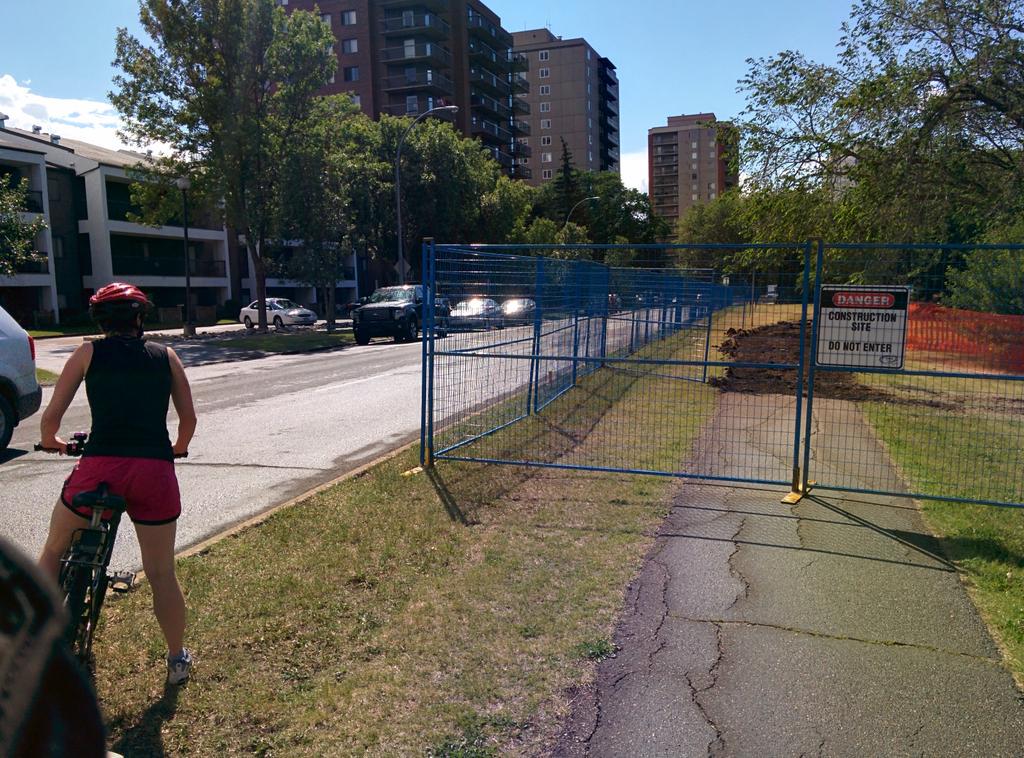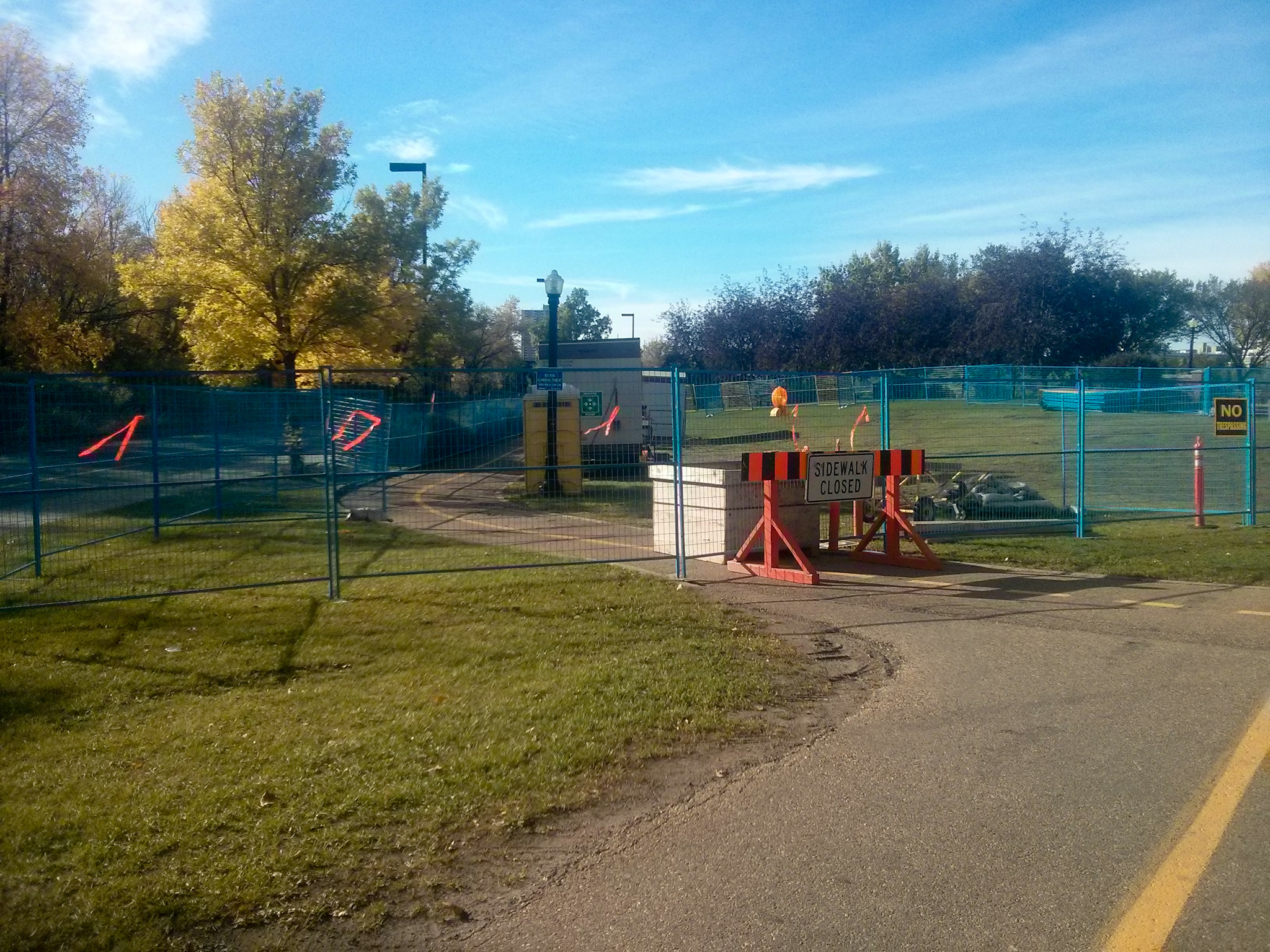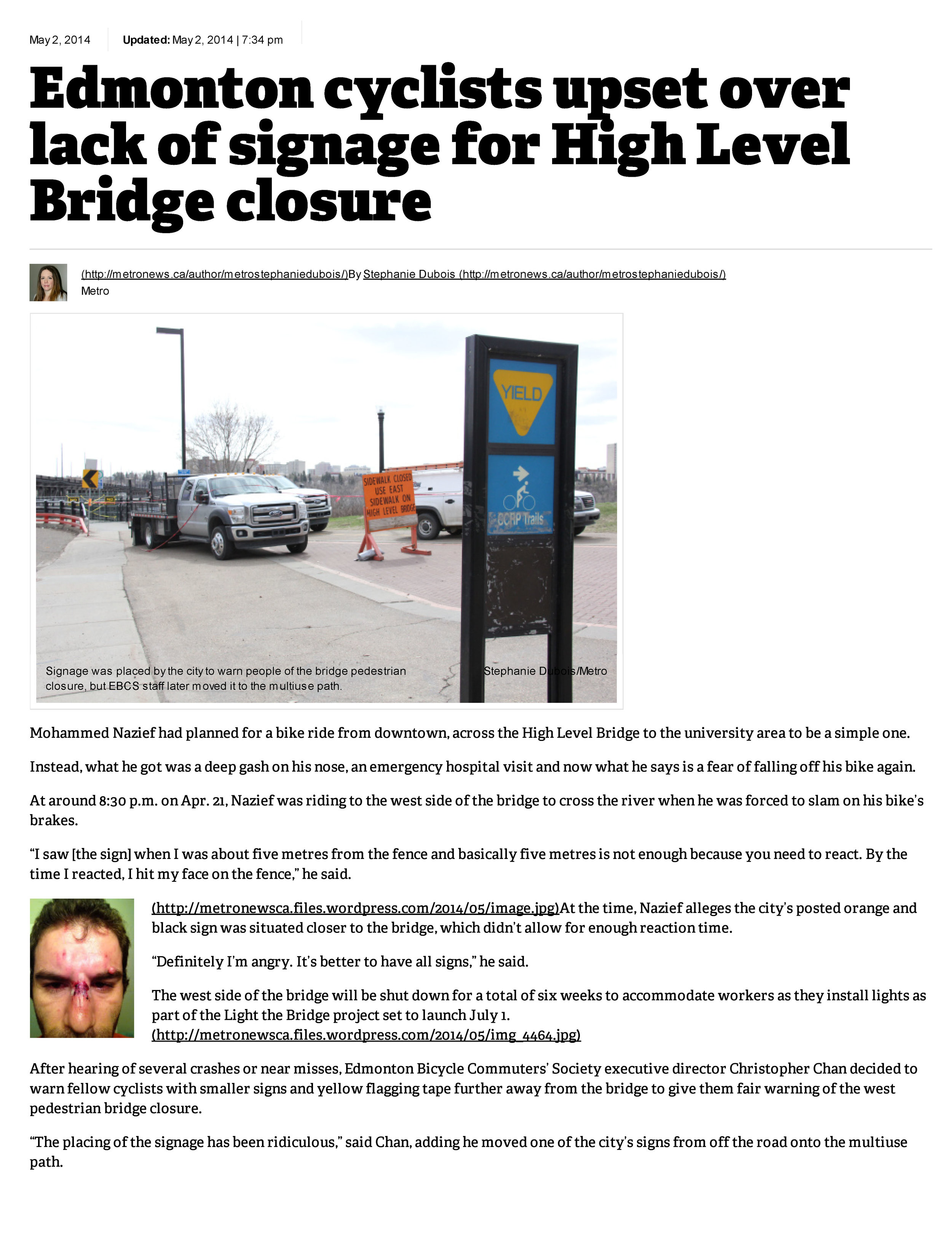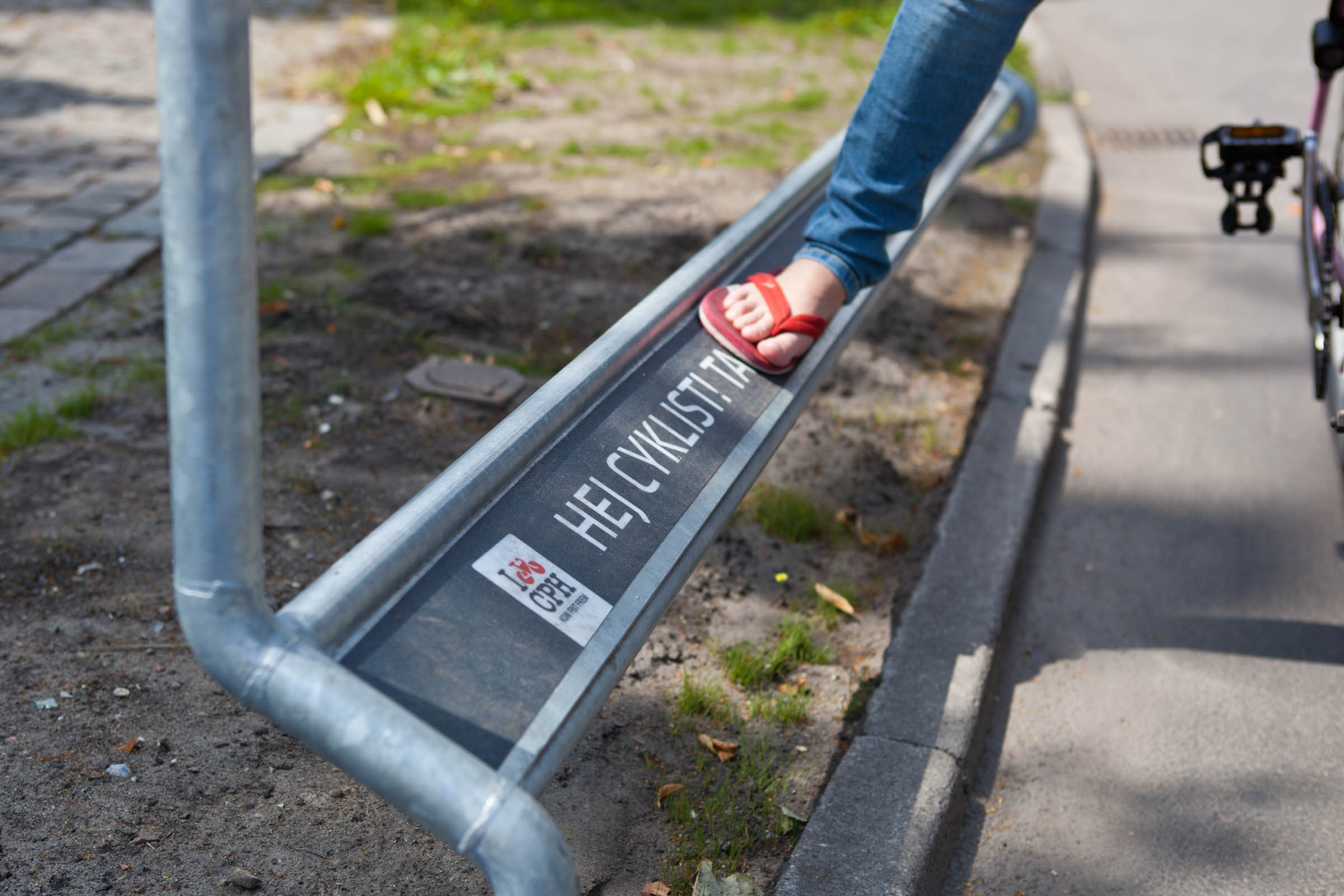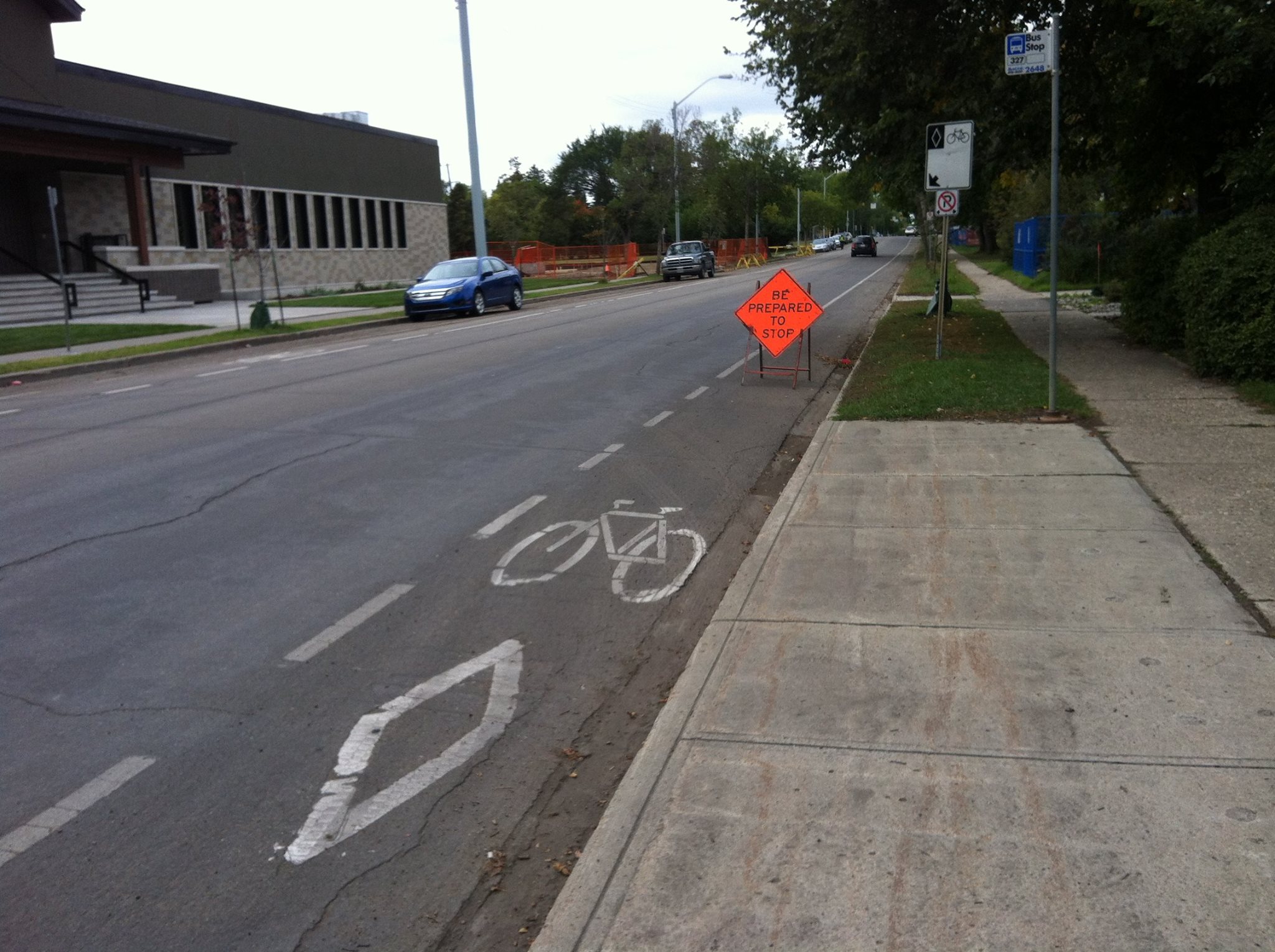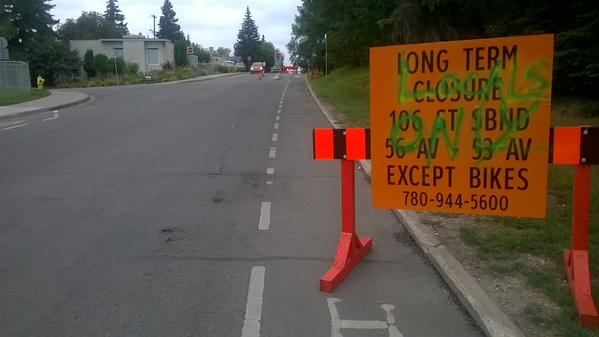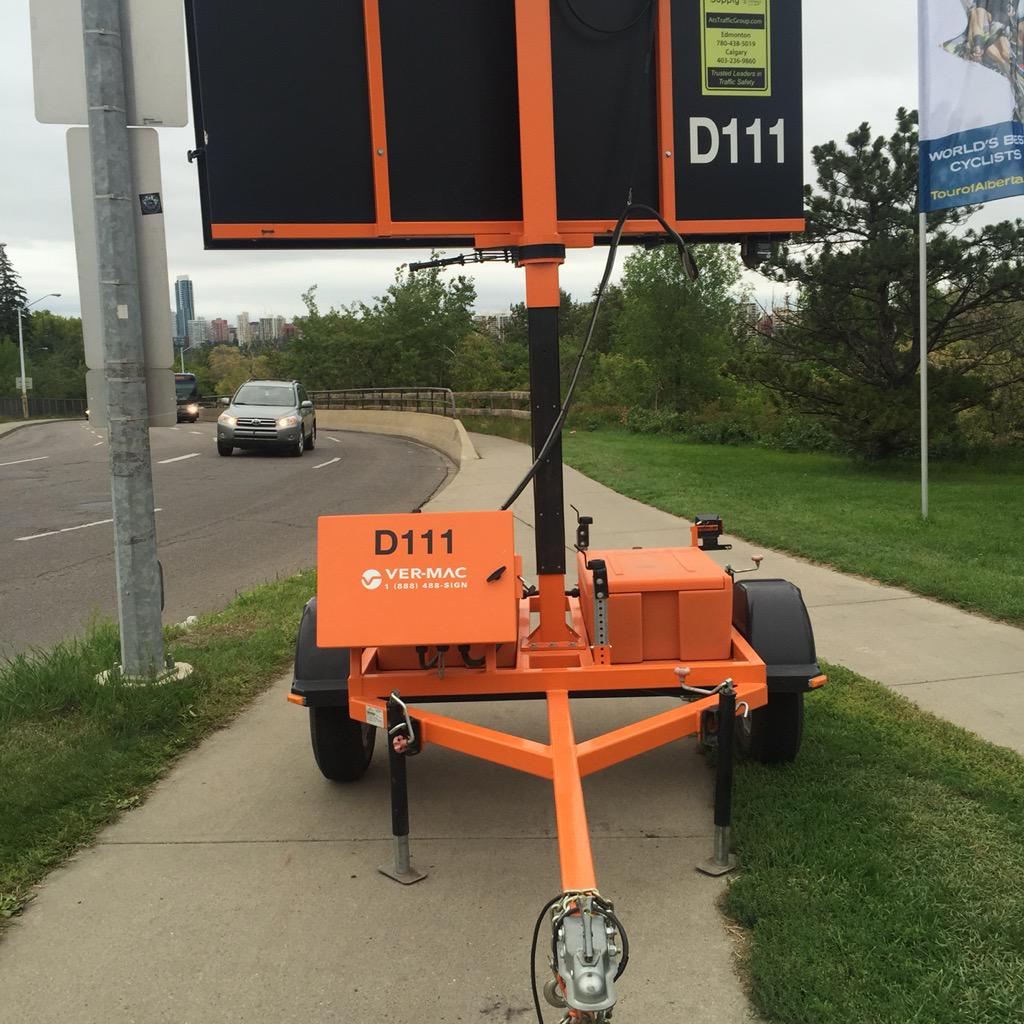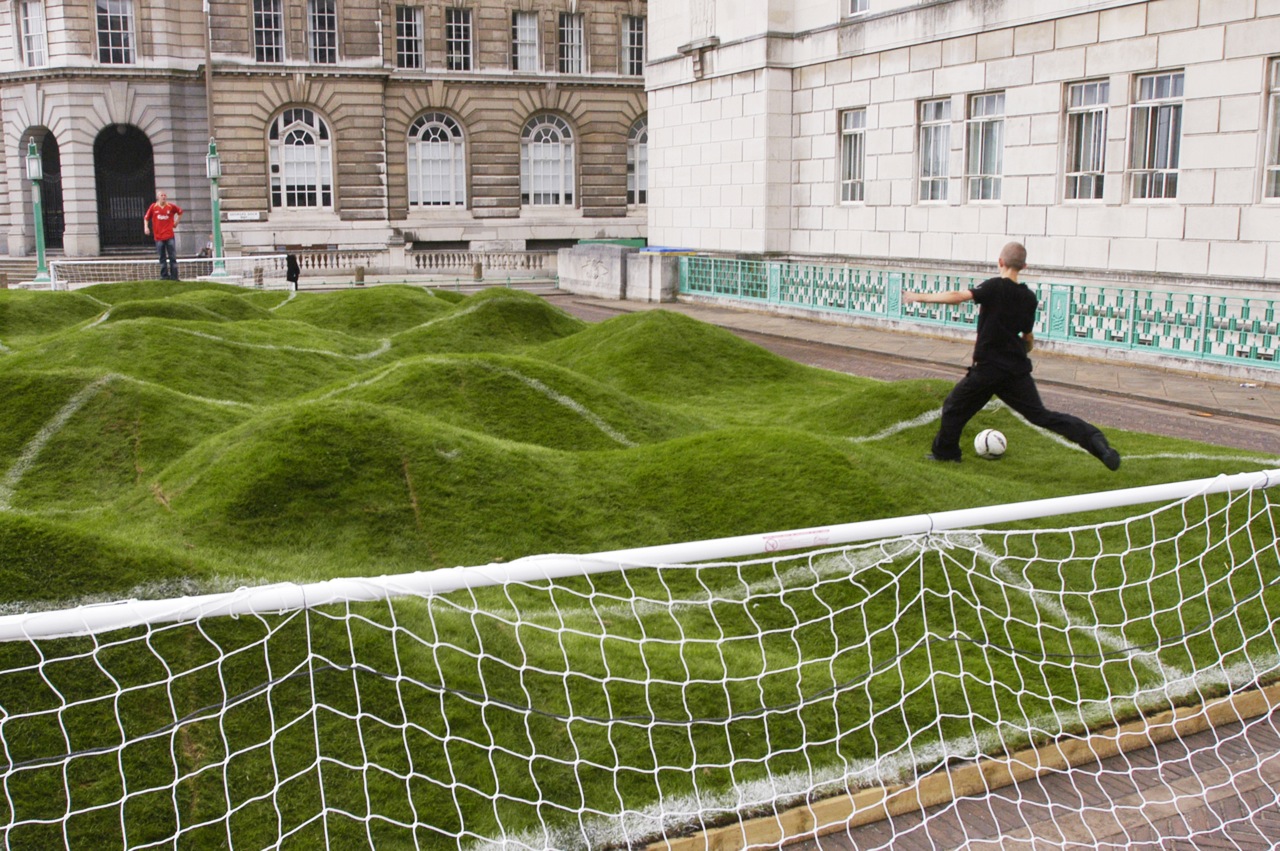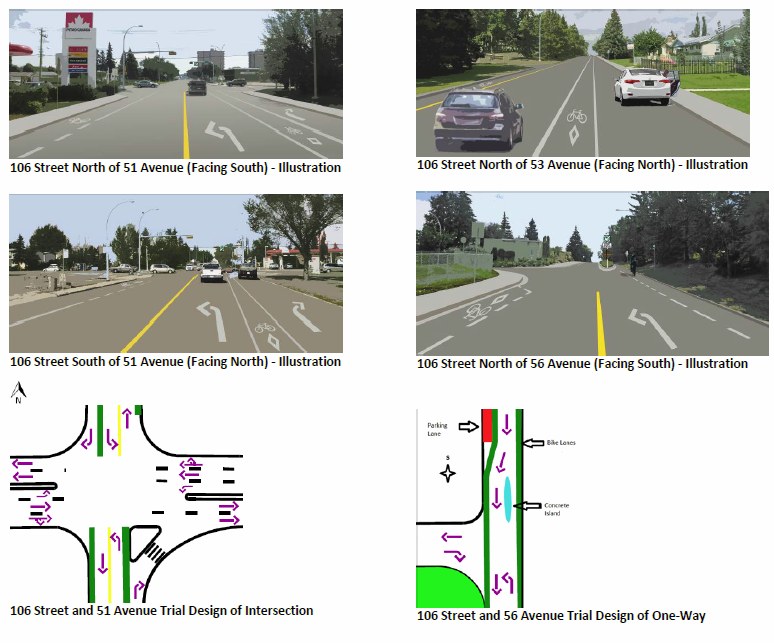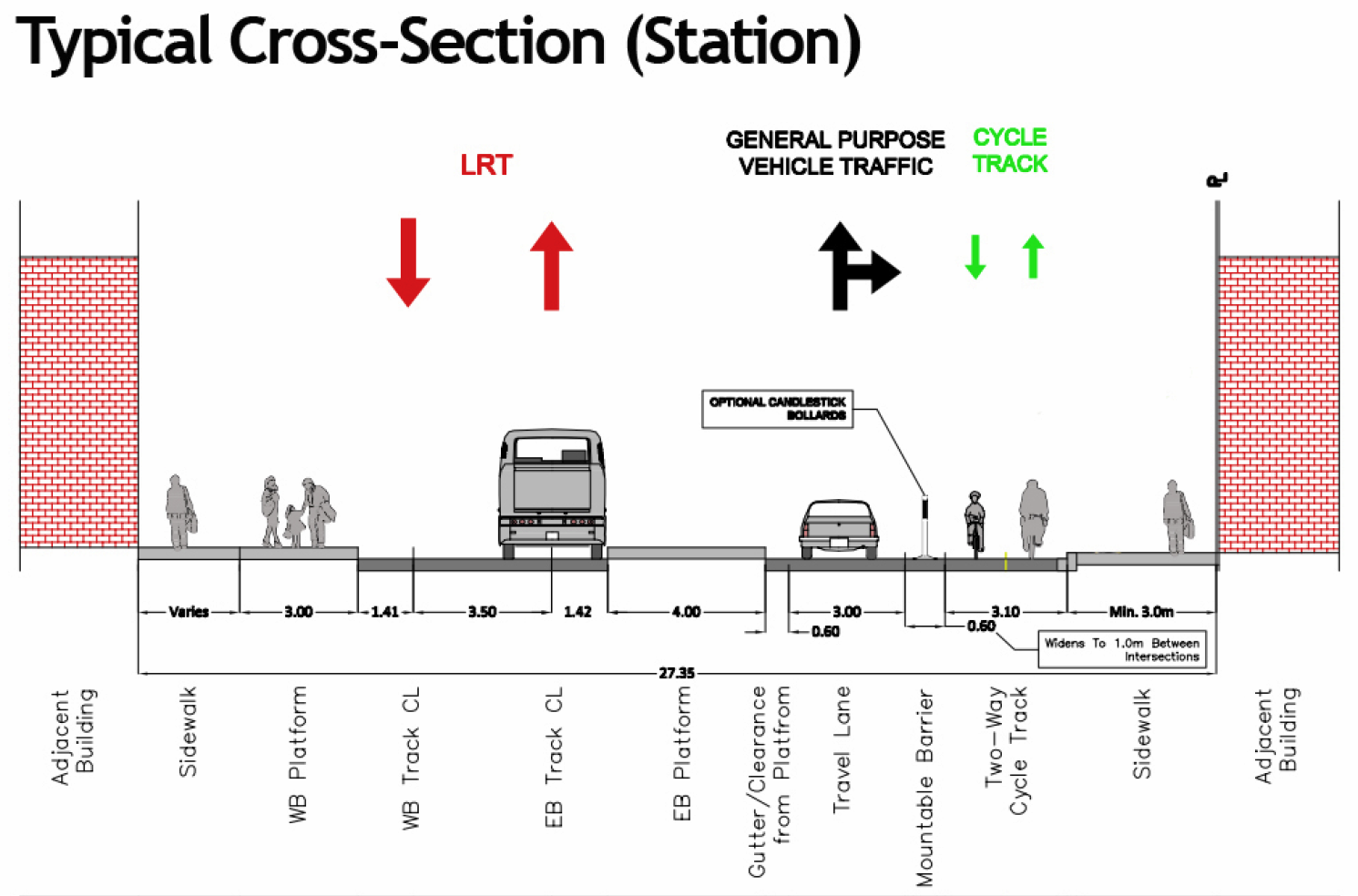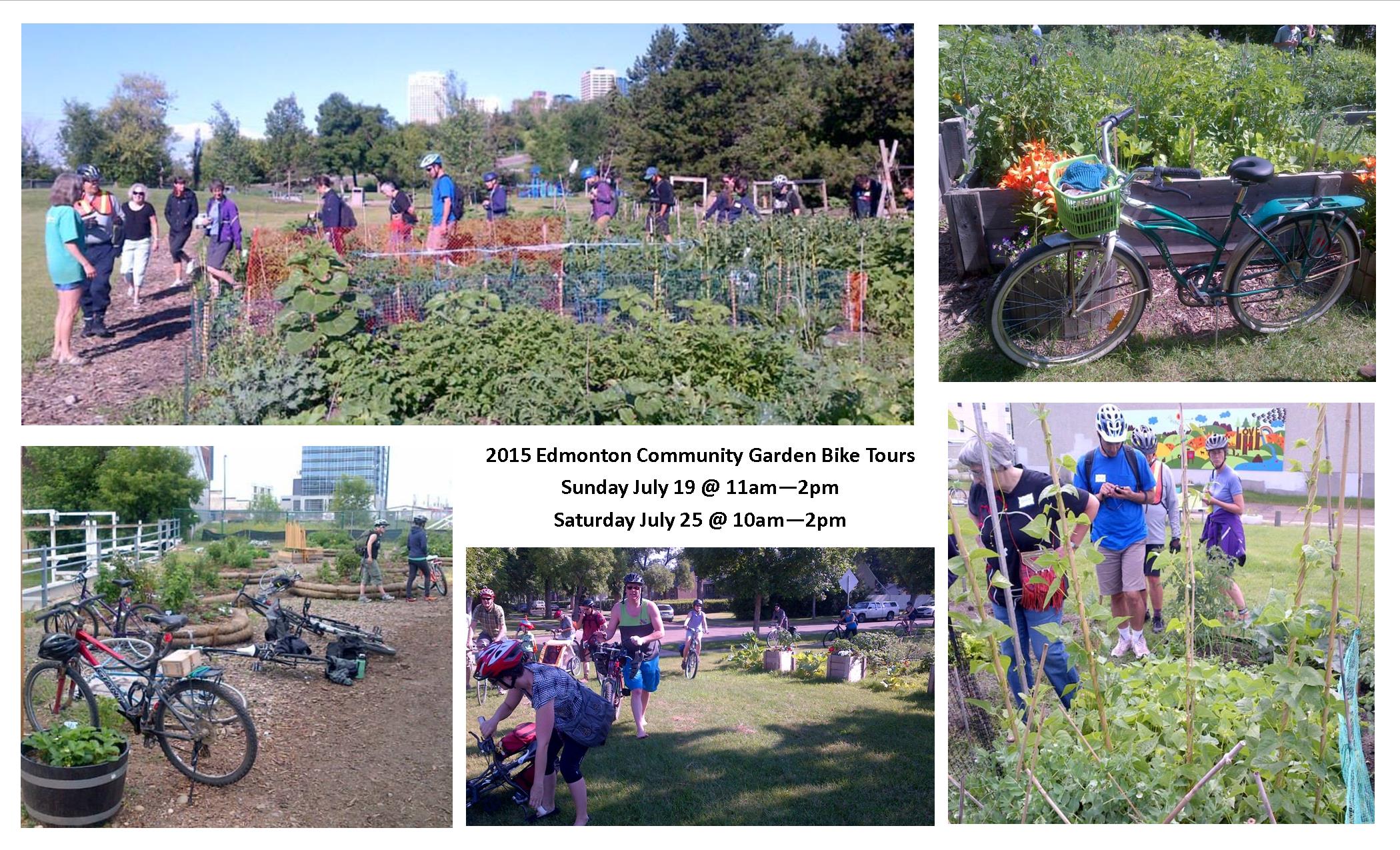Chances are that when you cross the North Saskatchewan River by bike you take the High Level Bridge. It’s the easiest way of moving between north and south Edmonton, particularly for those that want to avoid sore legs and sweaty backs. As a result, over 2000 bikes and 1500 pedestrians used the bridge daily in the summer of 2013.
While the journey across the bridge itself is a breeze (although too much of a breeze can make a ride on the east path a bit scary with its low guardrails), things get messy at intersections on its north and south ends, where pedestrians, cyclists, and drivers get pushed together.
Let’s focus on the south intersection, where 88 Avenue, 109 Street, Saskatchewan Drive, and Walterdale Hill meet:
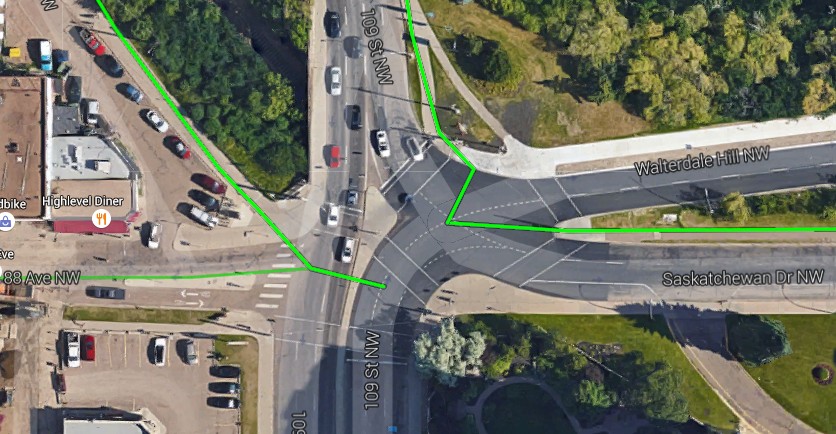
What's there
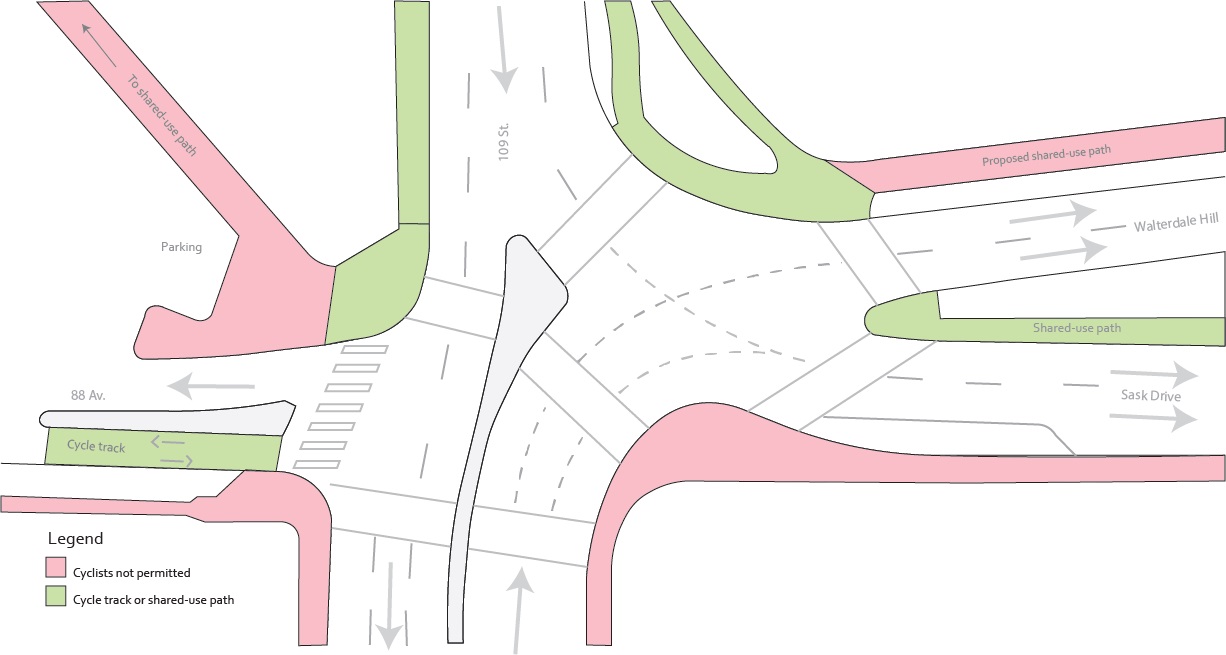
One of the most problematic features of this intersection is the design of the pedestrian and cyclist(?) crossings. I place a question mark after cyclist because there are no signs or design treatments designating the crossings for their use, although they are, in practice, heavily used by cyclists riding, not walking, their bikes alongside pedestrians. We only assume that cyclists are supposed to follow the pedestrian signals, which in some cities, like Montreal, could get you a ticket. Even Calgary has started marking locations where cyclists should follow the pedestrian signal. A constant refrain in the conversation around cyclists is that they are not pedestrians and should not be treated as such – however in this case (and most of Edmonton), there is no distinction made. (Note – Alberta law does allow people to ride through crosswalks without dismounting, though they are not afforded the right of way they would have while walking).
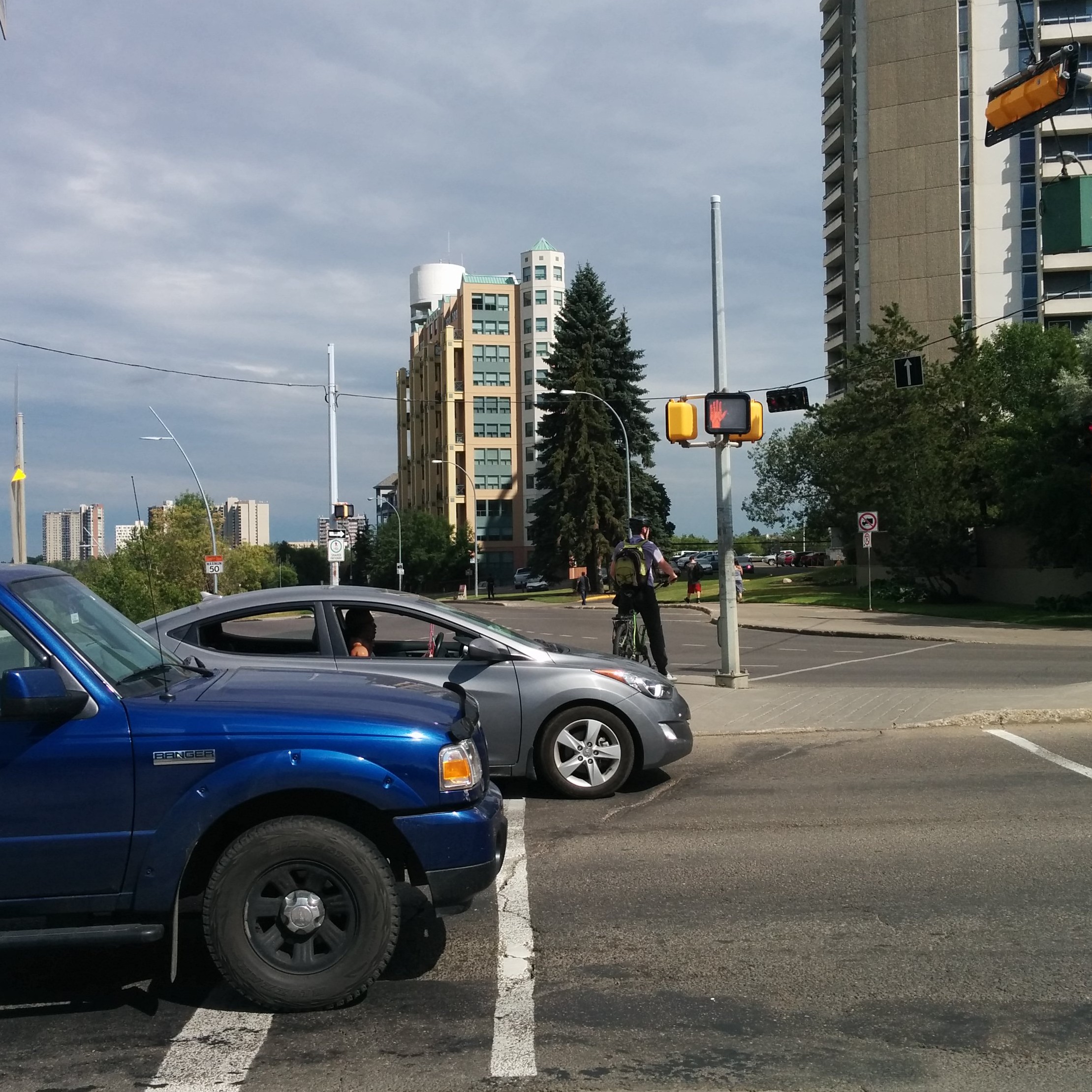
Important pieces of cycling infrastructure meet at this intersection, but it is hard to travel between them. To cross in most directions, cyclists are forced onto the sidewalk or a tiny island in the middle of the road. The existing (too narrow) shared-use path and short section of cycle track do not align and to travel straight between the two one must wait for at least one light cycle change (most likely lingering on the southeast corner with a crowd of pedestrians). Sometimes, the timing of the lights, which seem to be sequenced to maximise vehicular flow, can make your wait to cross painfully long. If you just miss the crossing signal when crossing from the cycle track to shared-use trail, you will spend 2 minutes and 15 seconds at this intersection alone! The actual crossings and curb cuts are so narrow that cyclists have barely enough room to squeeze past each other and pedestrians. In the below picture you can see another problem- there is no barrier preventing cars from using the cycle track to avoid the one-way westbound restriction on 88 Ave.
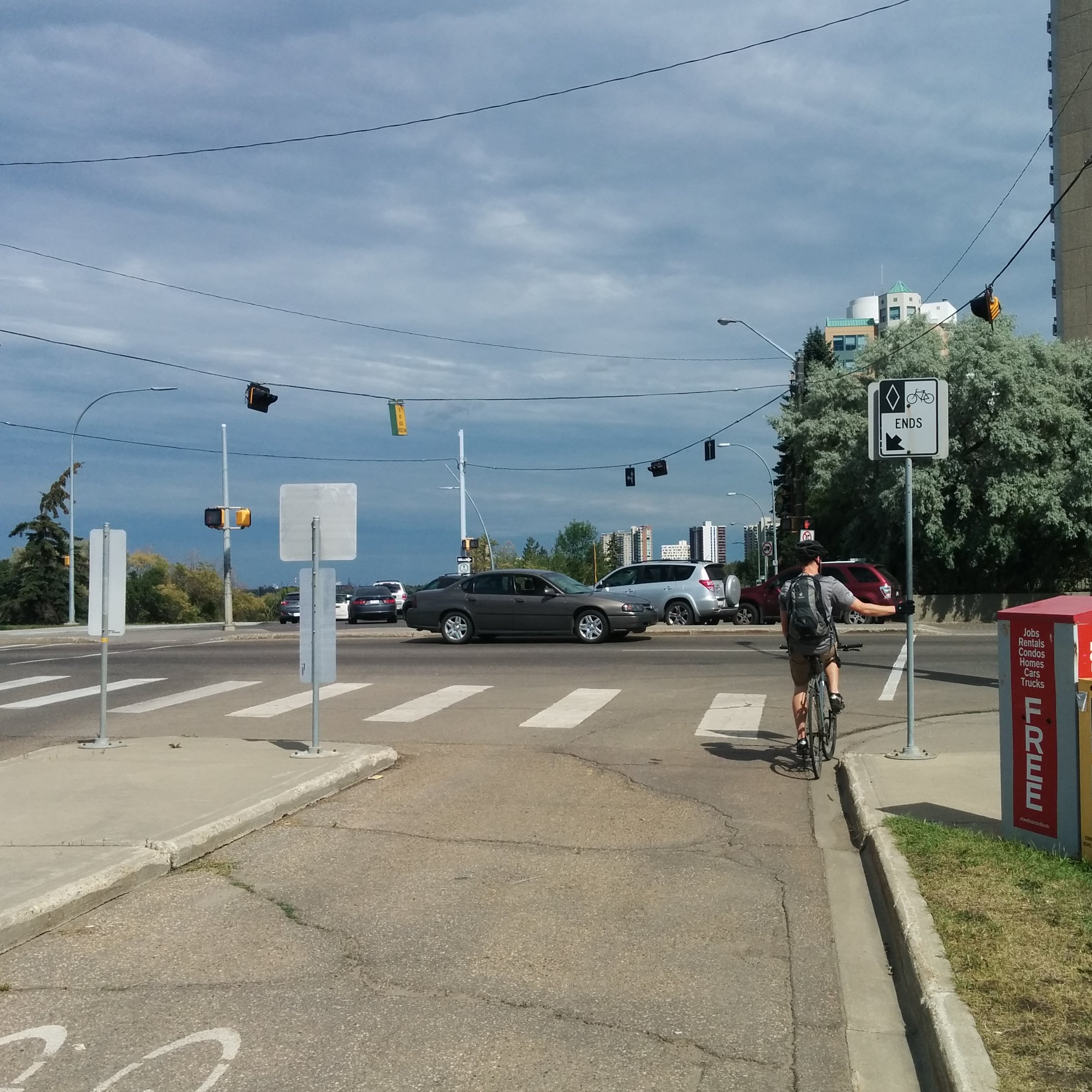
Another problem is the abrupt end of the northbound bus-taxi-bike lane on 109 Street just before Saskatchewan Drive, which morphs into a right turn lane.
Making this situation worse is an almost complete lack of directional signage. Aside from signs marking the entrance and end to the cycle track and designating the path along Saskatchewan Drive as shared-use, there is nary a visual clue as to what people on bikes should do at this intersection. There was a sign on the north-west corner (now flipped around to make it unreadable) which pointed cyclists down the narrow sidewalk towards the bridge (rather than the shared-use path) – in this case the absence of signage is better than what was there before. Confusingly, however, this narrow sidewalk, from Walterdale Hill to the High Level Bridge is designated in the traffic bylaw as shared-use despite any corresponding signage (and its obvious unsuitability for that purpose).
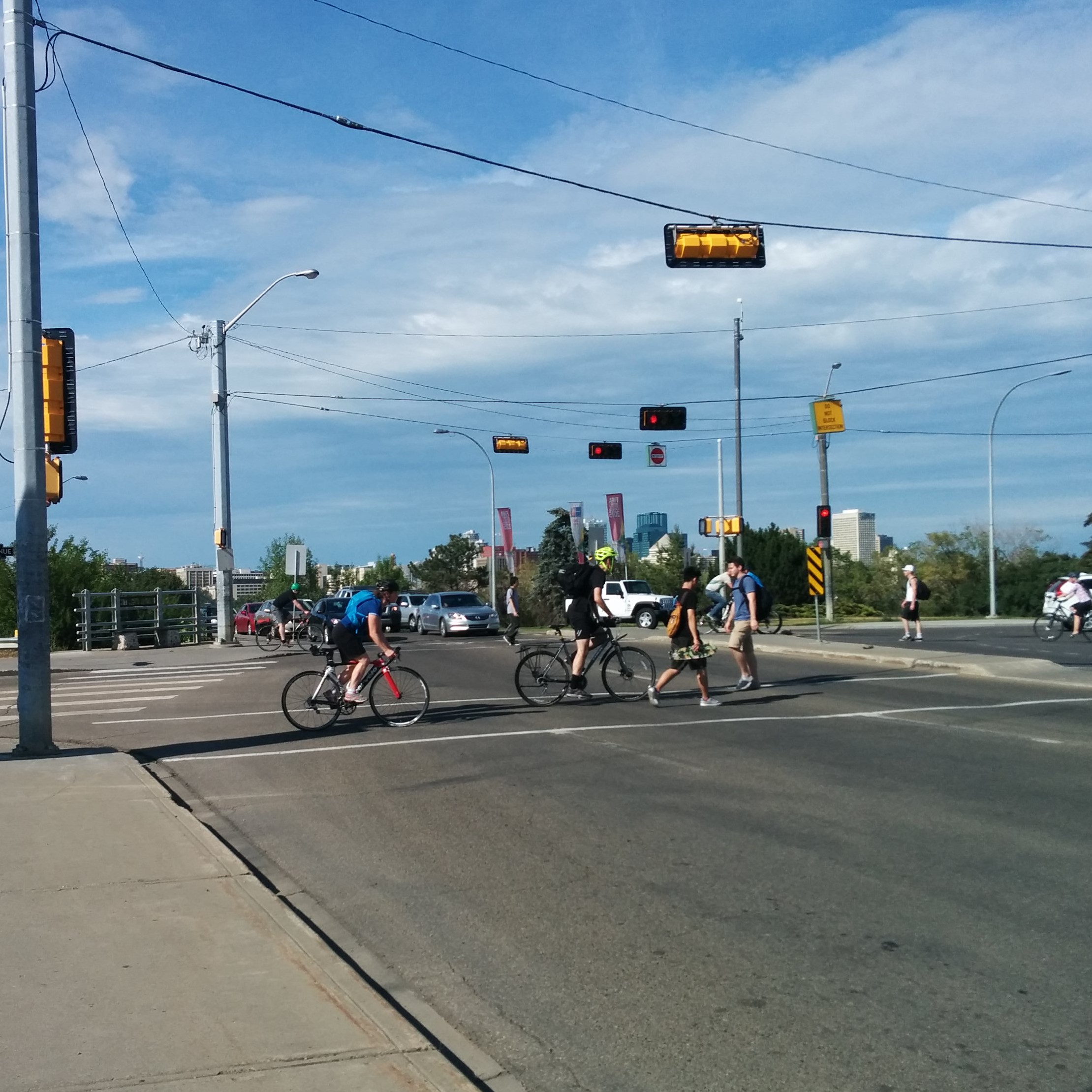
The lack of signage leads to a number of problems. Since no signs have been posted to designate the sections of sidewalk frequently used by cyclists to cross this intersection as shared-use paths, nearly every time a cyclist rides their bike through this intersection they are violating the traffic bylaw and could be subject to a $100 fine! As will be seen below, the lack of directional signage also leads to cyclists making risky decisions, annoying pedestrians, and taking convoluted routes to get across the intersection.
How people on bikes use the intersection
I was inspired by Copenhagenize's desire lines methodology and spent a couple hours at this intersection recording cyclists’ routes and behaviour on a sunny Tuesday, July 7. By recording cyclists’ routes through the intersection we can learn how the intersection is functioning. Because of the volume of traffic and limited resources (i.e. coloured pens instead of a camera), I couldn’t track cyclists coming in all directions at once, so I focused on certain approaches for 15 minute periods, which could be aggregated for a 15 minute snapshot. This is a “cleaned up” version of what I observed:
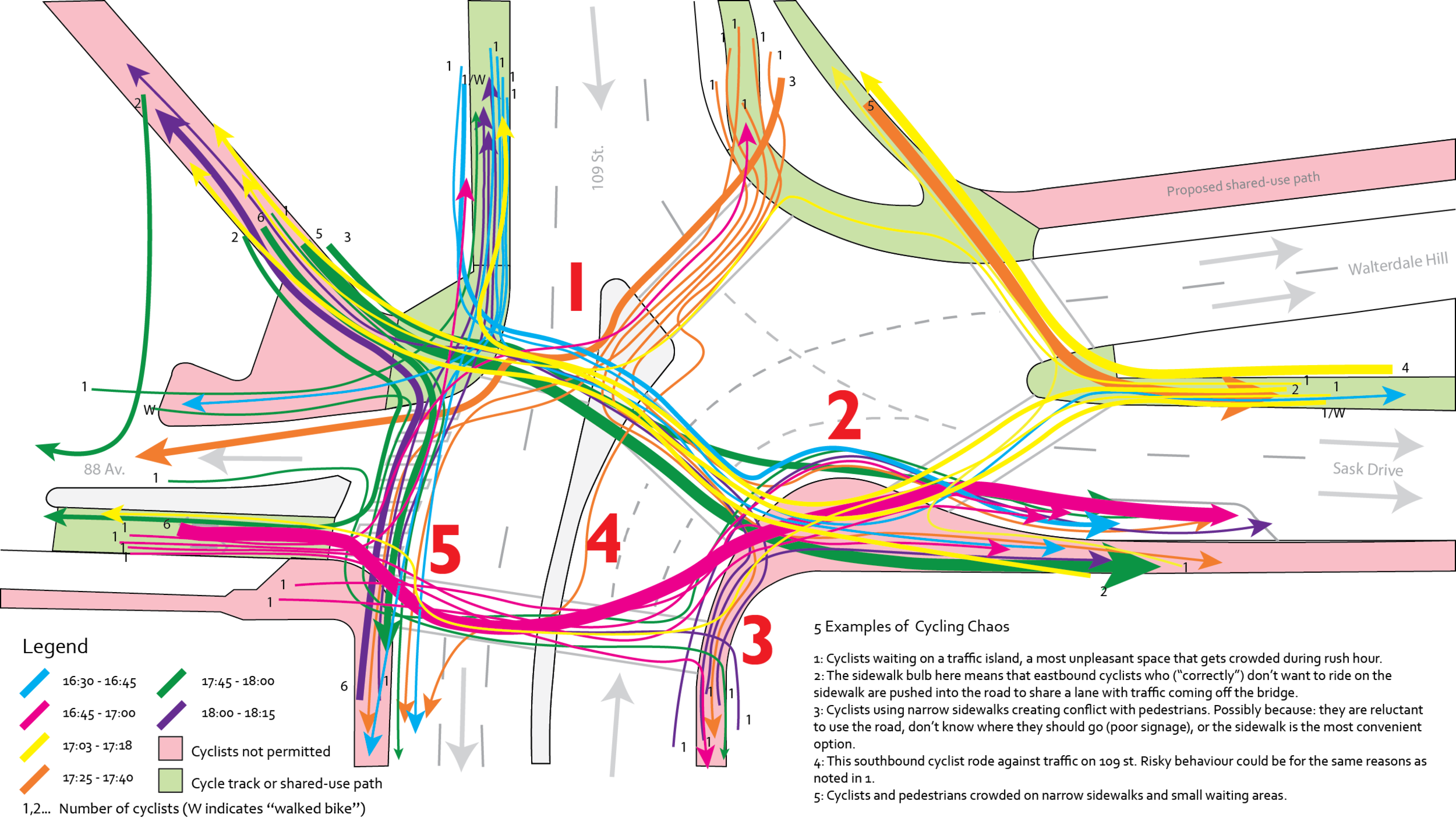
Perhaps an optimist would see the mess of different routes as an illustration of how free we are as cyclists to choose our way in a world that doesn’t remember us. However, from my experience riding through the intersection for several years, and observing it that afternoon, it is more a reaction to the absence of any safe and convenient paths, meaning that it is every cyclist for themselves. This becomes something of a problem when 80 cyclists use this intersection every 15 minutes during rush hour (according to these observations).
Unfortunately the design of this intersection encourages conflict (albeit mostly minor) within and between modes, risk-taking behaviour, and traffic bylaw violations. In addition to the conflicts noted in the above diagram, the vast majority of cyclists, 77 out of 80, did not dismount from their bicycles when crossing, which, while not required by law, is strongly encouraged by the City. Add in large volumes of traffic, a few unaware drivers who stop on the crossings when lights turn red, make unsafe right turns on red (prohibited here), or use the cycle track on 88 Ave as a way to avoid the one way, and you have a mess.
It was interesting to see how people navigated their way through the intersection. Most cyclists travelling east from 88 Ave would not use the shared-use path, but would instead ride across the crosswalk, cross the sidewalk bump-out, and merge onto Saskatchewan Drive (thick pink line). Similarly, most cyclists coming from the bridge and continuing east would not use the shared-use path, but instead would ride on Saskatchewan Drive or the sidewalk (blue and green lines). This is probably in part because the complicated crossing required to get onto the shared-use trail if you are coming from the west side of the bridge and because some of these cyclists will eventually head south. In the latter case, it is easier to turn right off of Saskatchewan Drive or its south sidewalk than trying to cross the road from the shared-use path on the north side. In contrast, cyclists coming south from the east side of the bridge WOULD use the shared-use path, as it was easily accessible with just one crossing (thick orange line). Most cyclists heading to or coming from the south used the sidewalks on 109th Street, which may point towards a need for better cycling infrastructure in that direction (clearly the disappearing bus-taxi-bike lane – which only is northbound – doesn’t cut it).
Wrap up
This post illustrates what is wrong with this intersection and how people on bikes currently cope with it. While it may not be the most dangerous or unpleasant intersection for cyclists in the city, its location at one end of the primary route for cyclists across the river and on a major east-west corridor is reason enough for improvement. Its current form is hazardous, confusing, and inconvenient for cyclists, as well as the hundreds of pedestrians who also share (or often compete for) the limited space not dedicated to motor vehicles. If the City is serious about implementing the principles contained within the Way We Move, the Complete Street Guidelines, and following through on its recent decision to improve cycling infrastructure in central areas, this intersection should be high on the list.
Of course, this is also an important and busy intersection for drivers, and is made more challenging by the number of one way streets which meet at it. Any design solutions must recognise that, but attempt to strike a better balance between all modes. Part 2 of this post will propose a few solutions – some simple, some drastic – that will make this a more pleasant intersection for cyclists and pedestrians, without unduly affecting motorised transportation.
This post is written by Michael O'Neill. Michael is a proud Edmontonian currently based in Montreal while he completes his Master of Urban Planning at McGill University. He rides bikes for fun and as his main way of getting around, but also walks, takes transit, and drives. He's thrilled to have the opportunity to write about cycling issues in Edmonton, and hopes that even if you disagree with his ideas, it will get you thinking about how improvements can be made. You can leave a comment on this post with any questions, or you can contact him directly via email at michael.oneill@mail.mcgill.ca
[show-panel id="8968" left=1 ispagenotpost=0]





